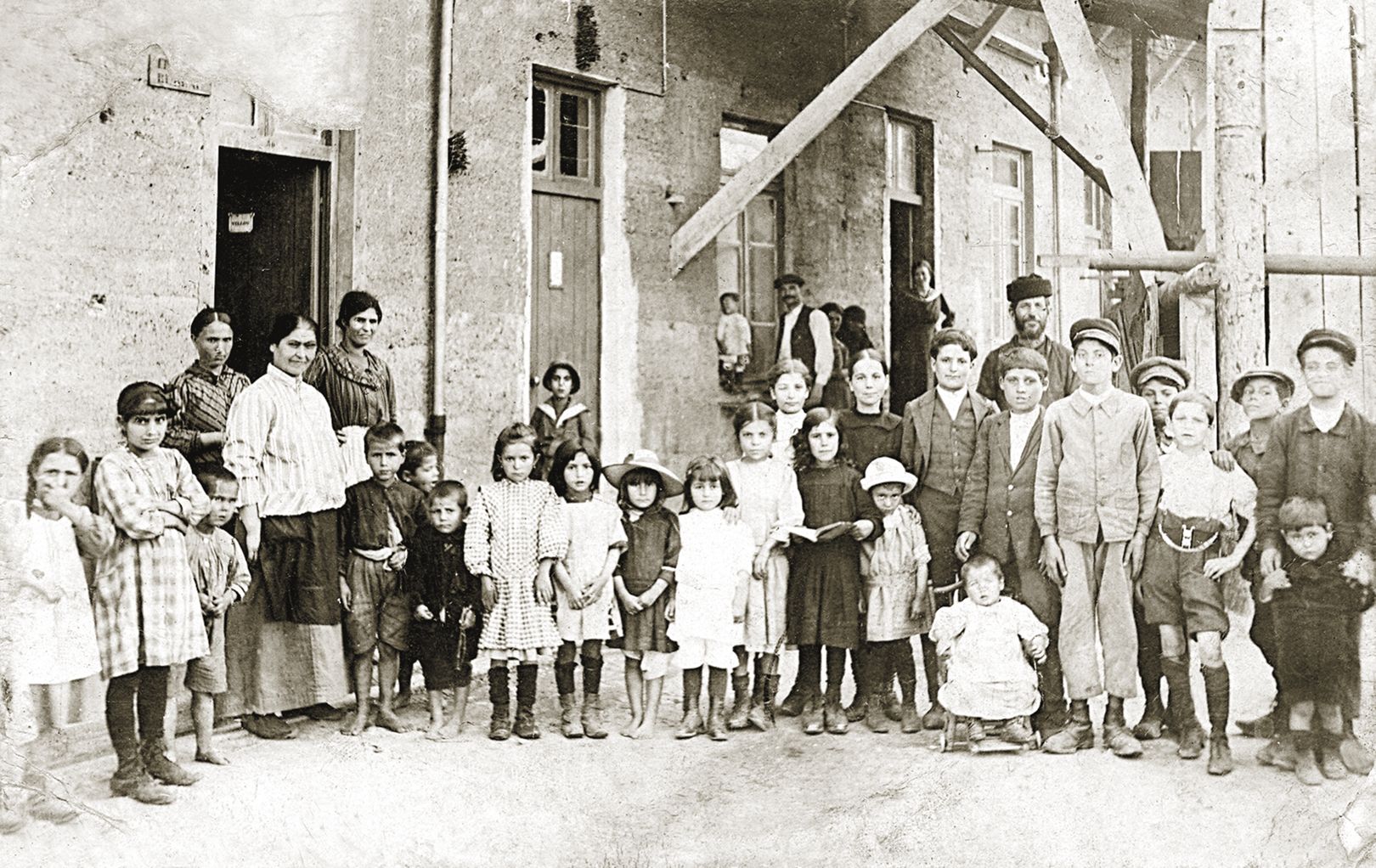The refugee schools of Nea Ionia
Full Description
The first two refugee schools opened their doors for students in the school year 1924-1925 and were both located near what today is called Evangelistrias Square. It was the 1st Refugee Elementary School for boys, with the students divided into four classes, and the 1st Refugee School for girls, where the students were divided into three classes.
For that first school year, 446 students were enrolled, a number which rose to 519 within just two years, indicating the expansion of the refugee settlement and the consequent rise in population.
The student registers of the refugee schools are valuable sources of demographic data about the refugee population, as they include the students’ birthplaces, essentially listing the origins of the refugee families that settled in Nea Ionia: Nikomideia (İzmit), Smyrna, Englezonisi (Uzunada), Kydonies (Ayvalık), Odemisio (Ödemiş), Lygda (Ovakent), Theira (Tire), Pontus, Magnisia (Manisa), Pergamos, Sevdikoy, Vrula (Urla), Yalova, Aidinio (Aydın), Sparti (Isparta), Old Fokaia (Foça), Prusa (Bursa), Constantinople, Denizli, etc.
These school records provide us with the opportunity to investigate the socioeconomic situation in the settlement, since the father’s occupation is also documented for each student. Most of the students’ fathers were workers, tobacco workers, builders, fishermen, sailors, coffee sellers, along with a significant number of orphans and children whose fathers were prisoners of war.
Almost a century later, the mass arrival in Greece of refugees from Syria, Afghanistan, Iraq, etc. in 2015 was characterised as a refugee crisis. No settlements were built during this new ‘crisis’ and instead the refugees were housed in tents or containers at temporary accommodation sites, known as camps, located far from the cities. One such camp operates outside the city of Volos, at the 3rd kilometre of the national highway leading to Larisa, on the site of what used to be the Mozas car dealership. While during the beginning of 2015 the arrival of the refugees was met with strong solidarity and support both in Greece and in Europe, gradually the climate changed against the refugees who have had to face intense social backlash and have become victims of discriminatory practices.
Indicatively, there were local protests in various schools against the participation of refugee children in public education. In the elementary school of Nea Ionia, however, community action had the exact opposite goal: to make the children of these new refugees feel welcome both in the school and in the neighbourhood. When the 15 children who lived at the Mozas accommodation facility arrived at the 9th Elementary School of Nea Ionia with their families for their first day of school, they were greeted by a crowd who had gathered to welcome them and send the message that the children of refugees would always be accepted in Nea Ionia.
A century ago, school records reflected the geography of the Ottoman Empire by documenting the birthplaces of the students at the Nea Ionia schools, from Smyrna to Prusa and Pontus. Nowadays, the school records of Nea Ionia schools reflect the inequities of economic globalization and the new geographies of modern warfare, with the students’ birthplaces ranging from cities in neighbouring countries, like Fier, Përmet, Tepelenë or Sofia, to cities as far-flung as Damascus, Kabul, Lahore, or the Gaza Strip.







